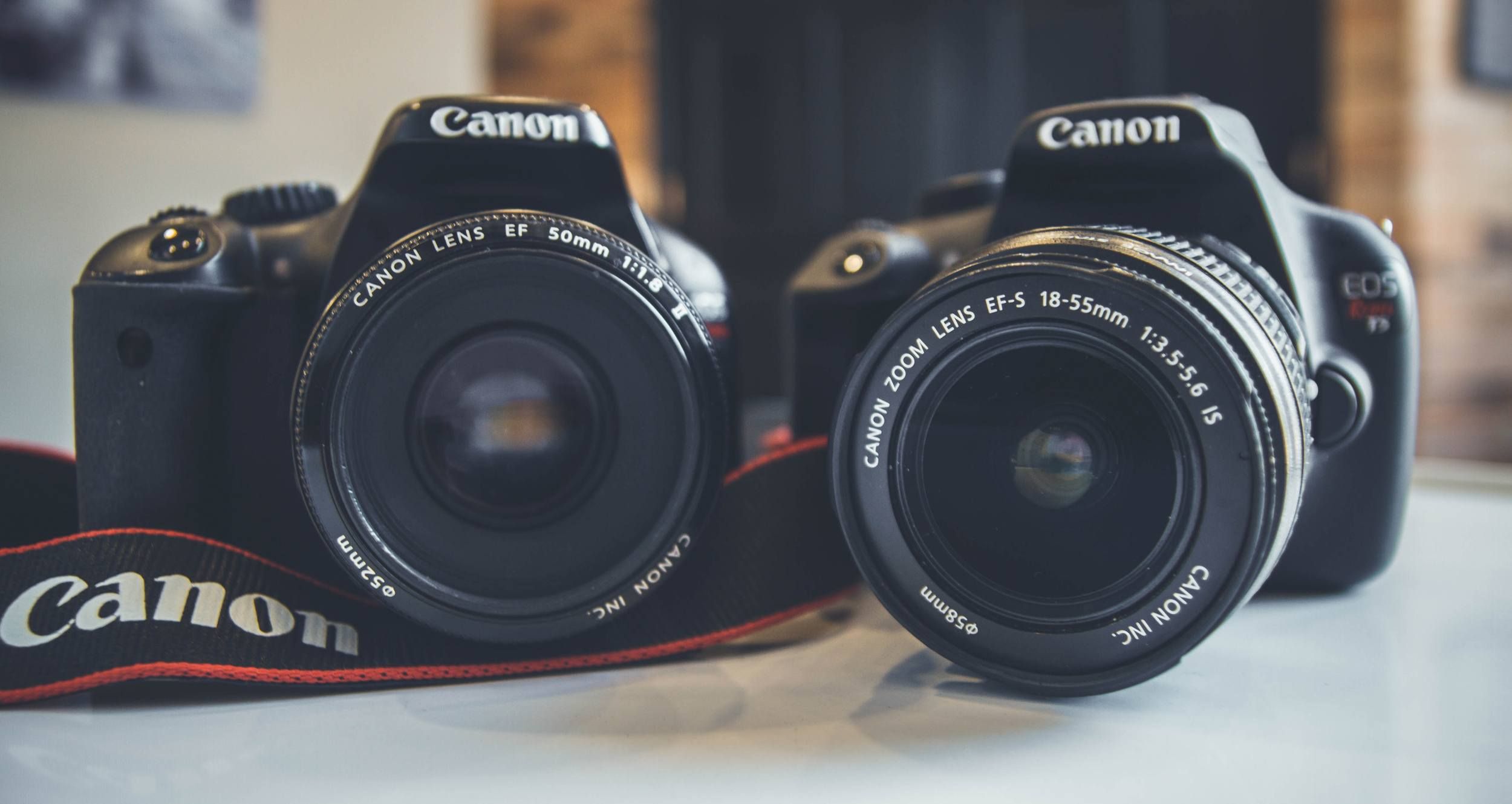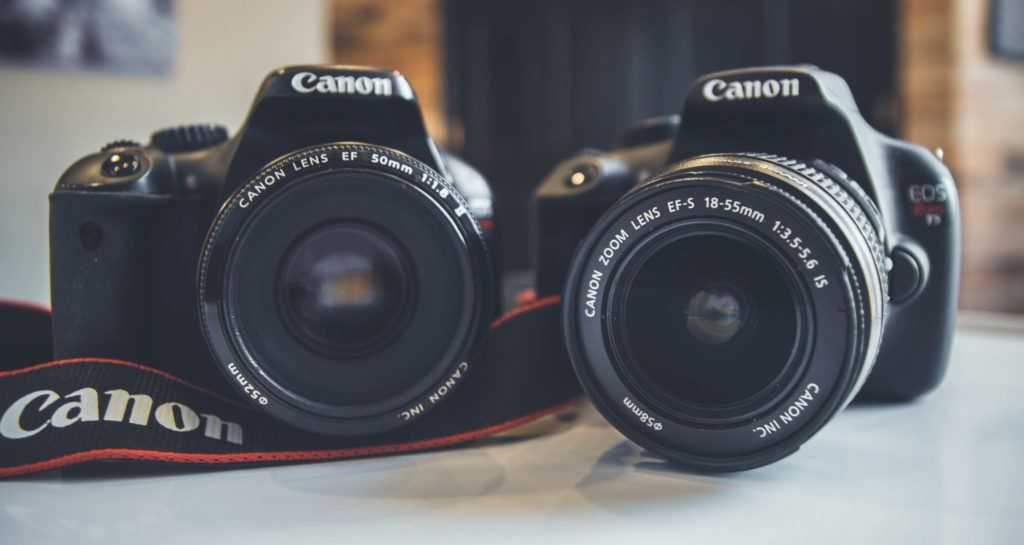Introduction
The more I think about the title of this guide, the more I realize that I’m opening myself up for heavy criticism because firstly, who am I to classify someone as a ‘beginner’ when I have never stopped learning new things in photography myself? I also realize that I may be discussing or recommending three specific cameras, but there may be so many similar (perhaps even ‘better’) cameras available!
Let me thus clarify a few things:
- By ‘beginner photographer,’ I mean someone who may have played around with bridge (point and shoot) cameras before but now wants to start getting a little more serious with photography.
- By ‘mid-range,’ I refer to cameras that are not too low in price but not too pricey either. In other words, I’m talking about cameras from $650 US to $1,000 US. I’m not discussing toys. They may not be top of the range, but they can serve and satisfy serious photographers for a long time to come.
- I realize that technology is improving by leaps and bounds and that a year from now, I may be biting my fingers as I look back at this guide and wonder why on earth I have not rather included a better/newer body.
- This guide is not a review of three camera models. It is a quick comparison to a few specific camera requirements which I believe is important to a beginner photographer. The cameras are specifically mid-range (priced at $700-$1,000 US).
- I don’t believe that anyone who has never picked up a camera before should buy a mid-range camera. Why? Because you may be totally overwhelmed by detail and features to such a degree that your camera becomes a white elephant sooner than later.
Should that happen to you after buying a mid-range camera, then at least you would not have washed an enormous amount of money down the drain.
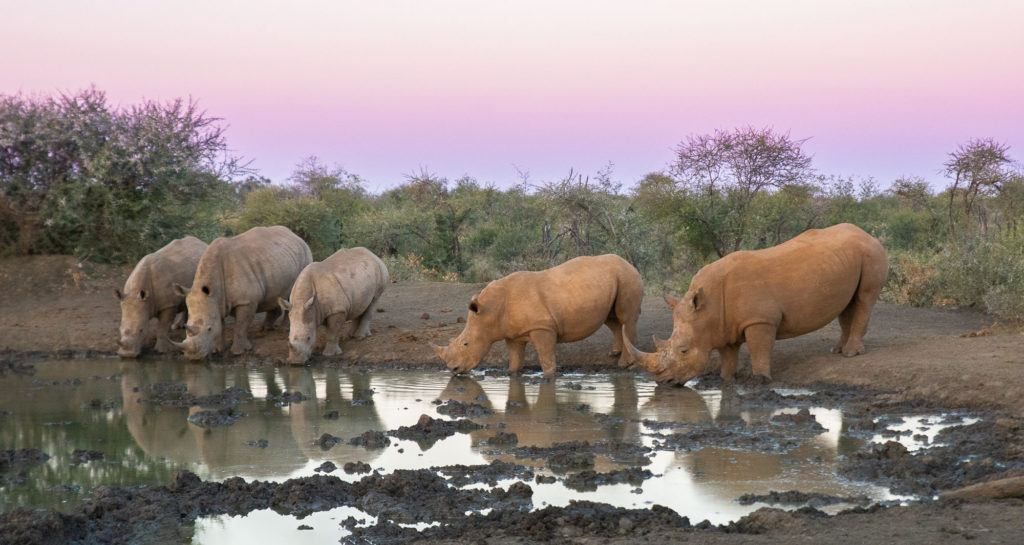
Photograph by Tobie Schalkwyk
What You Will Learn in This Guide
In this guide, I will discuss which mid-range camera (I believe) you should have a look at if you are getting serious about photography. I’m covering two digital single-lens reflexes (DSLR) cameras simply because I believe that their makers have been leaders in the DSLR market for as long as DSLRs existed, so they know what they’re doing.
The third camera is from the mirrorless stall. Again, I believe that its maker gained a lot of ground while the other two DSLRs’ makers were still making up their minds whether they wanted to explore the mirrorless world or not.
We will look at the reasons why I’m recommending these models to beginners specifically so that even if you do not eventually settle for one of these, you will have a good idea of what traits and features to consider when you shop around for a starter camera of your own.
Recommended Reading: Want a step-by-step guide on photography skills with your DSLR? Grab a copy of our best-selling guide: the DSLR Crash Course.
Important Capabilities and Features for Beginners
What are the important mid-range capabilities and features to look at for beginner photographers? I believe they are as follows:
- Relatively Low-Cost
As mentioned before, if you decide that this hobby is not for you, after all, you won’t lose that much, even if you sell your camera at a bit of a loss or you only use it on rare occasions.
Note: As mentioned before, I am specifically not recommending the cheapest entry-level camera bodies. You may find yourself shopping for an upgrade too soon after outgrowing the features and capabilities of these models.
- Re-Usable Lenses
If you decide to upgrade your camera, you’re at a huge advantage if you could keep and re-use your lenses. To put it differently, it’s a bonus if you’re able to use higher grade’ lenses on your current kit; for example, use full-frame lenses on your crop sensor DSLR body (*) and keep on using them after an upgrade.
- Easy Menu System to Navigate
The last thing you want to do is to get entangled in menu systems. In fact, you should only need to access your menu system when really needed, such as when setting up your camera for the first time after purchase.
- Same Look and Feel as Higher-End Models
If you ever decide to upgrade, the ideal situation would be to have more or less the same menu system (as well as dials and buttons) as in your beginner DSLR.
(*) ‘Full Frame’ refers to DSLRs with a sensor sized to imitate the film size of the ‘old’ 35mm film cameras: 36mm x 24mm in dimension. These are also known as ‘FX-format’ cameras. Crop sensor DSLRs (also known as DX-format cameras) have sensors smaller than full-frame cameras. These sensors capture only the inside two-thirds of the scene and discard the rest, leading to a 1.5x (Nikon) or 1.6x (Canon) ‘zoom’ effect in the final image. This is known as the 1.5x or 1.6x ‘cropping factor’ of the camera.
Key Lesson: I have only listed a few capabilities and features which I believe are important for beginner photographers. Your needs, likes, and dislikes may be totally different from mine. If so, then set up your own list of prerequisites for your coming investment in a camera body.
Research it and if possible, see if you can fire off a few shots with each of these cameras and perhaps its closest competition. Be 100% sure before putting your money down. Your choice of the brand will probably stay with you for the rest of your life because it is not only expensive to change brands, but you’ll have to learn everything about the new brand all over again.
Mid-Range Camera Body #1: The Nikon D7500
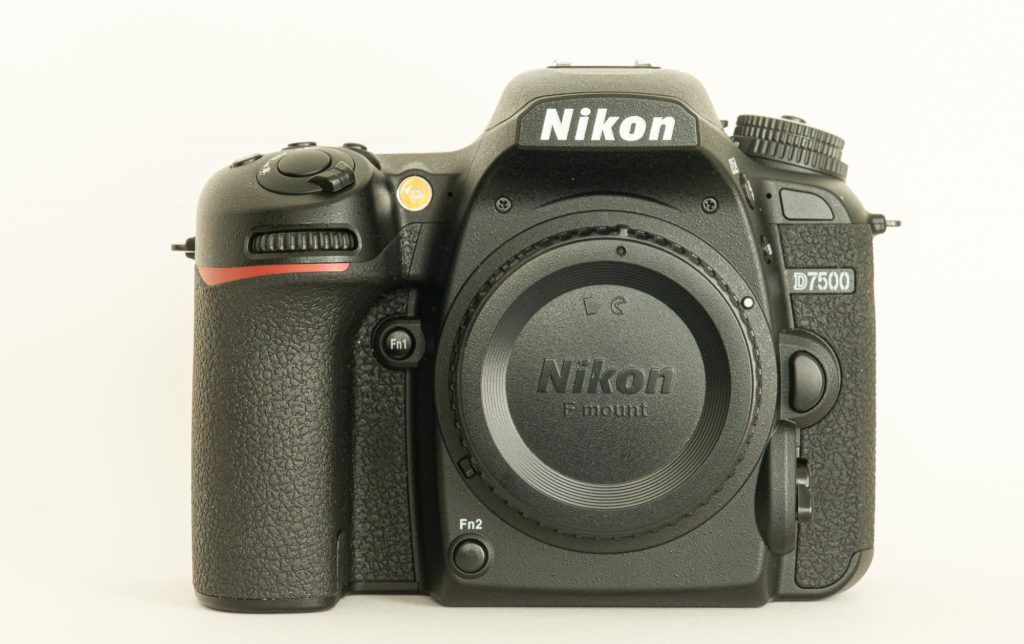
Photograph by Patrick Weir
This DX-format DSLR is the latest in Nikon’s 7000 series. Why am I recommending it?
Be 100% sure before putting your money down. Your choice of the brand will probably stay with you for the rest of your life...
Relatively Low-Cost
This was the reason I not only opted to go for my Nikon D7000 years ago but why I also chose to go for the Nikon brand. There was simply no competitor in the D7000’s price range across all DSLR brands.
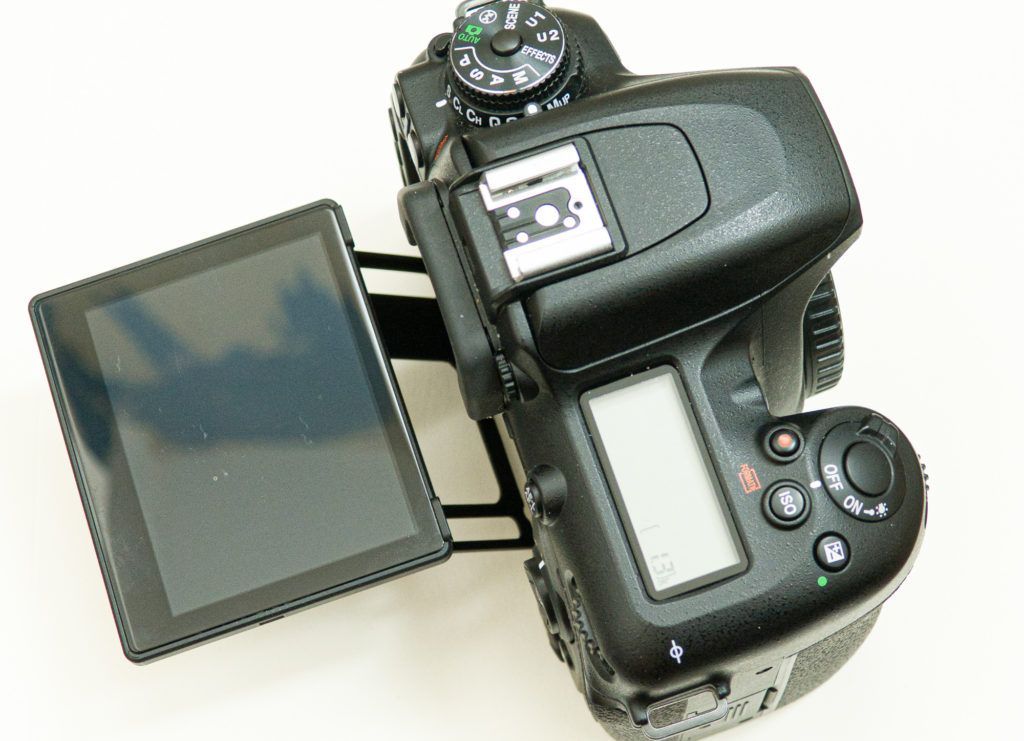
Photograph by Patrick Weir
The D7500 may be a little on the ‘old’ side, but it’s still excellent value for money. Which most important features are you getting for roughly $1,000 US?
- A 21 Megapixel sensor (allowing you relatively large high-quality prints)
- Eight frames per second (FPS) continuous shooting (anything above six FPS is highly desired in the world of photography). By the way, the D7000’s small memory buffer was fixed in subsequent models in the D7000 range.
- Quite a decent ISO handling for a crop sensor camera, compared to other bodies in the same price range
- 4K Ultra HD video recording
- Tilt LCD screen (not able to swivel sideways, though)
- The same sensor as used in Nikon’s crop sensor flagship: the D500 (known for its great high ISO handling and high-quality images)
- Dual memory card slots. I have stopped counting how many times I have arrived at a shoot, realizing that my second card was still in my laptop at home and being saved by the remaining card in the slot.
The second card can be used to:
- mirror the first (as a backup, for peace of mind or to keep a copy for yourself when you hand your images over to someone else for editing);
- extend the first (when full – especially important for video shoots); or
- to create JPG versions of the RAW files on the first card.
- Weather sealing (against dust and water droplets)
- Built-in WI-FI capability
- Built-in pop-up flash
- Support for more than 30 languages
Re-Usable Lenses
When using a Full Frame (FX) lens on the D7500, the 1.5x cropping factor is implied. That means that you will see only the inner two-thirds of your image after taking the picture. Nikon has a DX lens range which will create an image as seen through the viewfinder. These lenses are cheaper and lighter than the FX lenses.
When using a DX lens on a full-frame camera, the camera will automatically switch to DX mode to prevent vignetting. Thus, if you can afford it, purchase FX lenses from the start. The added advantage is that these lenses usually allow an aperture selection of f/1.8 or f/2.8. DX lenses usually open up to f/3.5 at its widest.

Photograph by Patrick Weir
Easy Menu System
I know, this is subjective. What is easy for me is not necessarily easy for you and vice versa. Even so, Nikon’s menu system is one of the main reasons that I chose this brand years ago.
I know, this is subjective. What is easy for me is not necessarily easy for you and vice versa.
If you still need to make up your mind about which brand to opt for, do not forget to check out the various menu systems. Remember, this choice will stay with you, probably for the rest of your life. It is very unlikely that you would switch brands at a later stage.
Same Look and Feel as Upgrade Model
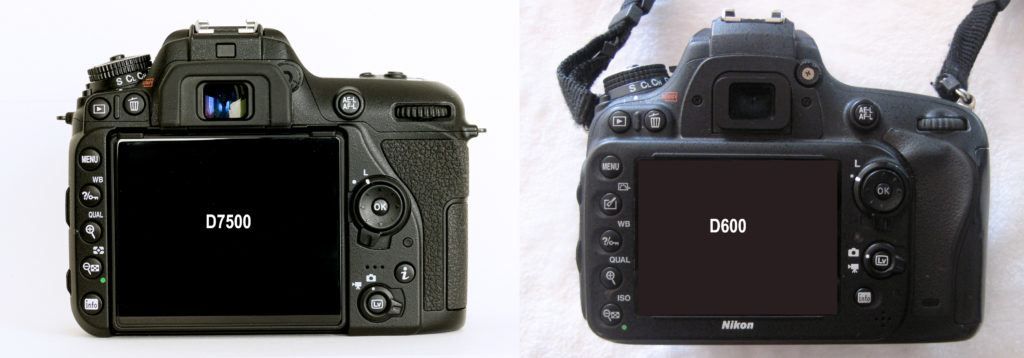
Photograph by Tobie Schalkwyk
This creates a very strong case for the D7500. I have used both my D7000 and full-frame D600 on shoots for many years and the perceived differences were almost non-existent. The D7000 had a somewhat smaller body and one or two-button variances, but that was it.
You should experience the same if you ever decide to upgrade to the D610/D750/D850 full-frame bodies and use them interchangeably.
Alternatives to the D7500
If you find the D7500’s price range a bit steep, have a look at the D3500 and D5600. Keep in mind, though, that you’re getting what you’re paying for. Be careful of being ‘penny wise, pound foolish.’
Key Lesson: The Nikon D7500 is a favorite among many photographers for a reason. It is great value for money, lightweight, packed with features, and almost identical to upgrade models. This not only means that an upgrade will be relatively cheap and easy, but also that you can juggle the two bodies on a shoot without any difficulties.
Its 1.5x cropping factor implies a zoom effect, which is one of the reasons why many pro photographers hang on to their mid-range crop sensor cameras. Its dual memory slots are not to be scoffed at; it has saved my day more times than I can remember.
Mid-Range Camera Body #2: The Canon EOS Rebel T8i (EOS 850D)
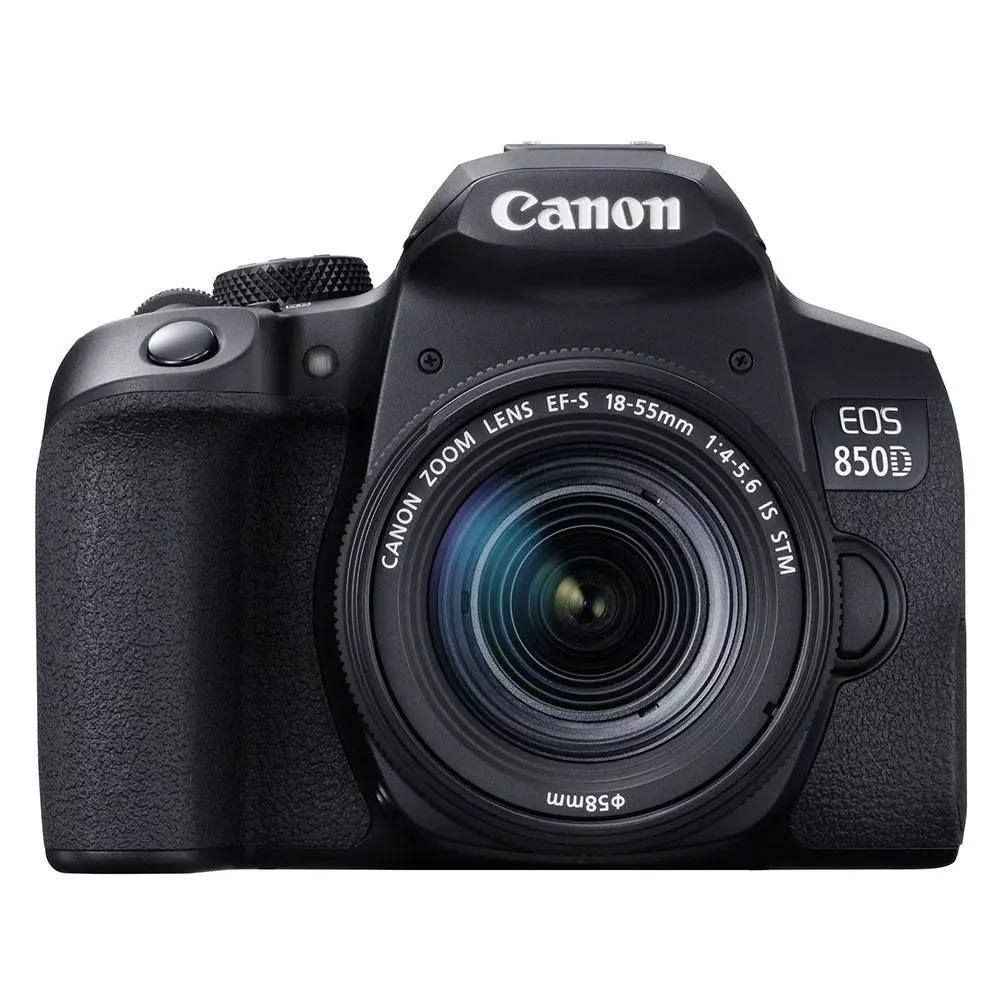
Photograph by Cameraland (Sandton)
This Crop sensor DSLR is branded as the ‘EOS Rebel T8i’ in some countries such as the USA, and the ‘EOS 850D’ in others. Just to make things more interesting, it is labeled ‘EOS Kiss X10i’ in Japan. I will only use the term ‘T8i’ from hereon for the sake of sanity.
Since its first introduction to the market years ago, Canon’s EOS Rebel’s range of cameras led the market in terms of beginner DSLRs. Currently (end of 2020), the EOS Rebel T8i is leading the Rebel pack in terms of features and quality.
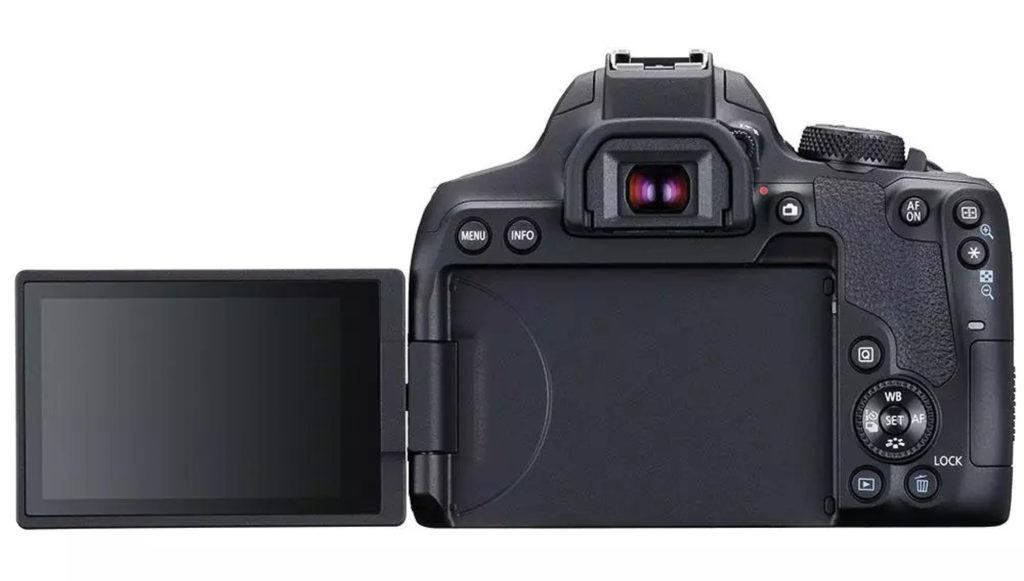
Photograph by Cameraland (Sandton)
So, what are you getting for your +/- $750 US?
- A 24 Megapixel crop sensor (APS-C), allowing you large-high-quality prints
- Face and eye detection in Live View
- 4K Full HD video recording
- Touch screen
- Swivel screen
- 5 frames per second (FPS) continuous shooting
- No weather sealing
- WI-FI and Bluetooth connectivity
- Built-in pop-up flash
Cost
At roughly $750 US (depending on where you buy), this body is actually a bit cheaper than the Nikon D7500, which makes it excellent value for money.
Lens Re-Usability
When using crop sensor Canon lenses on a full-frame body, you will get thick dark edges on all four sides. Keep this in mind if you decide to start with crop sensor lenses (which are recommended for beginner photographers from an expense viewpoint).
On the other hand, when using full-frame lenses on the T8i, a 1.6x cropping factor is implicit and you will throw away one-third of your image on all four sides. You will not have to replace it should you decide to upgrade to a full-frame body in the future, though.
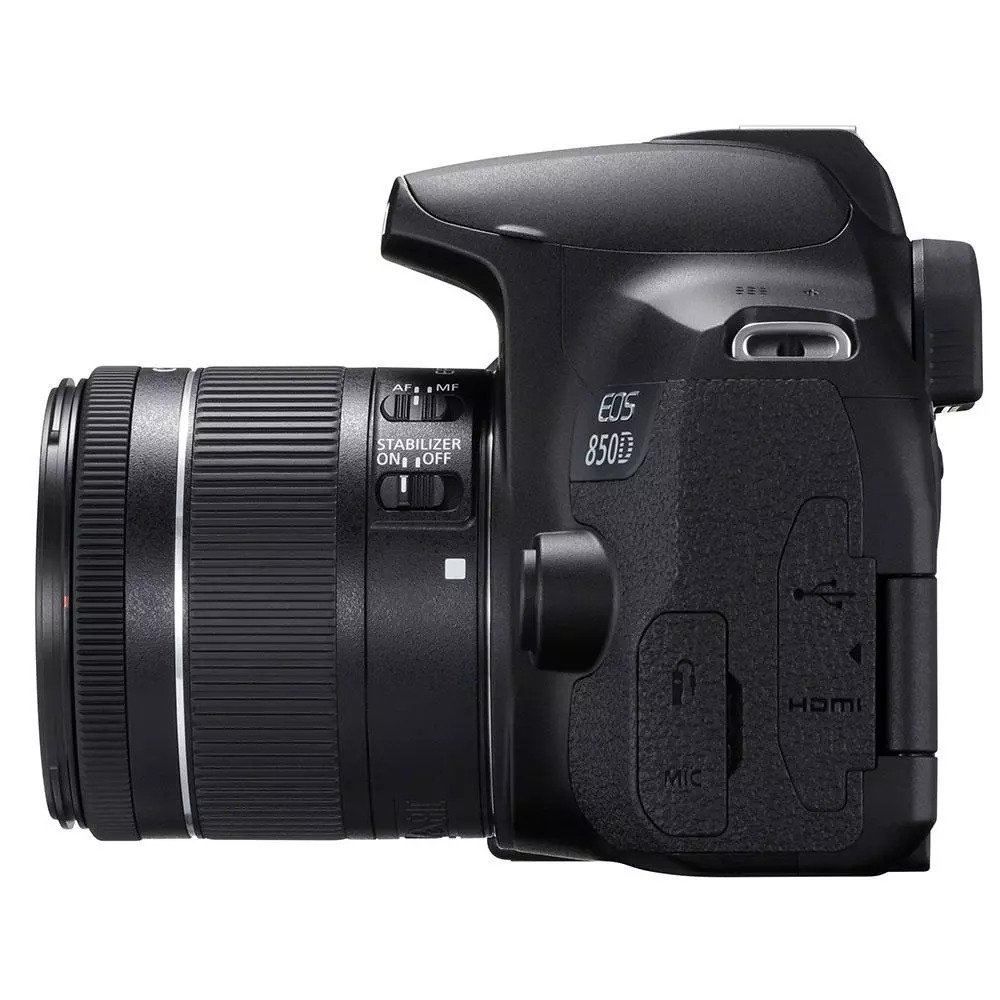
Photograph by Cameraland (Sandton)
Ease of Use of the Menu System
It is interesting to know that Canon users will never be convinced that Nikon’s menu system is more intuitive, and vice versa. It is safe to assume, though, that with millions of Canon users out there, Canon’s menu system cannot be ‘bad’ at all.
I’d recommend visiting your nearest Canikon vendor and having a look at the menu system yourself if it’s that important to you. You will know almost immediately which menu system suits you best.
Same Look and Feel as Upgrade Models
Unfortunately, the EOS Rebel range of cameras does not have almost identical bodies in the full-frame stall, although there are ‘similar’ full-frame bodies. This is not much of a problem if you eventually swap one for the other because you will quickly get used to the new body’s layout and similar menu structure. It could be a bit of a pain if you juggle the two bodies during a shoot, though.
Key Lesson: The Canon EOS Rebel T8i/850D/Kiss X10i is one of Canon’s latest releases, so it will have Canon’s latest technology built into it. It compares very favorably to the competition in the same price range, so you can certainly not go wrong by starting with it. It should serve you well for many years to come.
Recommended Reading: Want a step-by-step guide on photography skills with your DSLR? Grab a copy of our best-selling guide: the DSLR Crash Course.
Mid-Range Camera Body #3: The Fuji X-T200
This camera is very different from the two camera bodies recommended above. Why? Because it is a mirrorless camera.
Let’s have a look at mirrorless vs. mirror cameras for a moment, before moving on to the X-T200.
Mirror vs. Mirrorless
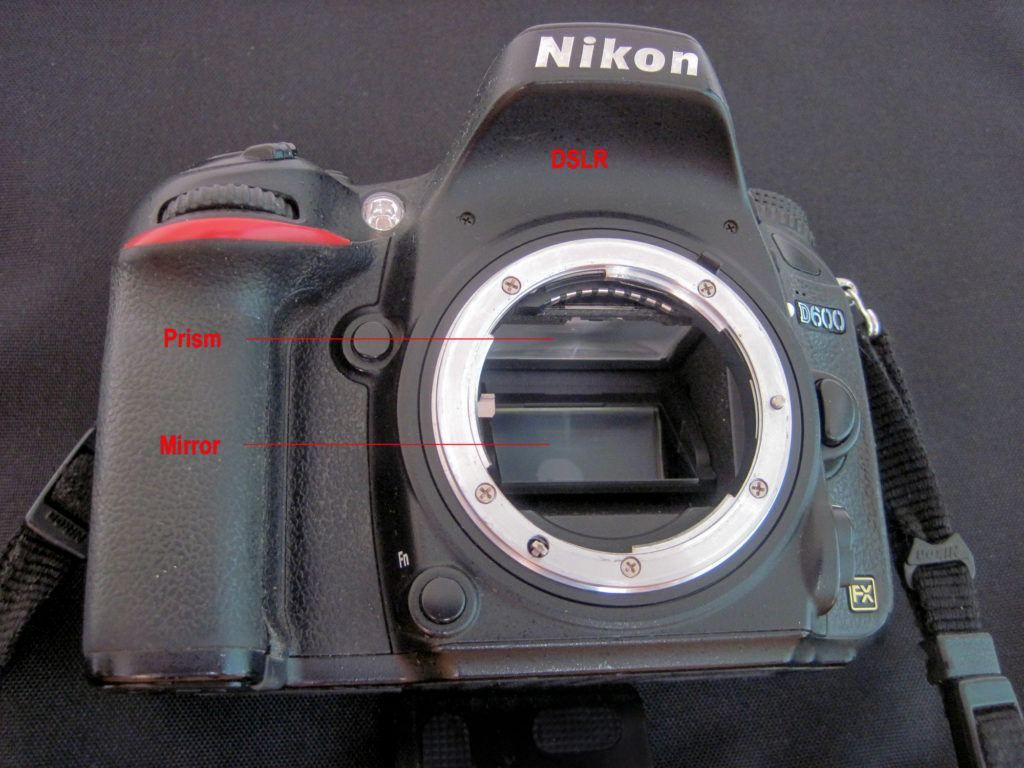
Photograph by Tobie Schalkwyk
Every DSLR camera has a built-in mirror that, when not busy taking a picture, sits right in front of your camera sensor. It actually blocks the way to your sensor and reflects the image straight up into a prism, which reflects the image further into your camera’s optical viewfinder. Clever, hey?
What is the problem with this? For the image to reach the sensor, the mirror will have to be removed out of the way. That is exactly what happens when you release the trigger: the mirror swivels up and sits right against the prism above it.
The super-fast swivel action of the mirror is what gives DSLRs that typical glide-snap ‘shhhhhlick’ sound, which I got addicted to immediately when I heard it in the days of ‘SLR’ (film SLR) cameras. This mirror action happens extremely quickly and you can actually see your viewfinder turning black for a milli-second as you release the shutter. The mirror returns to its normal position immediately after that, also super-fast.
The super-fast swivel action of the mirror is what gives DSLRs that typical glide-snap ‘shhhhhlick’ sound...
If you are not yet ‘wow-ed’ by this clever mirror mechanism, just imagine what is happening when you’re taking seven or eight frames per second in continuous shooting mode. The above-mentioned mirror lift-and-reset action happens seven or eight times per second, allowing you to track a moving subject during the series of shots!
When taking movie films with your DSLR, the mirror is removed out of the way temporarily, until you stop recording that particular cut. That is why you cannot view the scene through your optical viewfinder while recording, as your mirror prevents the image coming in through your lens from reaching your optical viewfinder. This is known as ‘Live View,’ where you’re receiving the image in the same way as when taking a picture (or video) using a mirrorless camera.

Photograph by Tobie Schalkwyk
Mirrorless cameras (as the name suggests) have no built-in mirrors. The image is relayed to your LCD screen (or digital viewfinder which looks like a DSLR’s optical viewfinder) electronically. The old film cameras (SLRs) obviously did not have the luxury of ‘live’ electronic sensors which could channel the image from your lens to your viewfinder. Therefore, the invention of a mirror mechanism. This invention was carried over to DSLRs.
Mirrorless cameras (as the name suggests) have no built-in mirrors. The image is relayed to your LCD screen electronically.
In its simple form, one can say a mirrorless camera is a bridge camera on steroids, with interchangeable lenses.
Pros and Cons of Mirrorless Cameras
Pros
- Size. The mirror mechanism of DSLRs takes up a lot of space, demanding bigger bodies. The absence of a mirror mechanism in mirrorless bodies enables smaller body sizes which are more popular with ladies and men with small-ish hands.
Cons
- New technology. The mirrorless technology is still new compared to DSLR technology. The images thus were not of the same quality as that of DSLRs up to quite recently. This gap in quality became much smaller in the last couple of years, though, if it still exists at all.
- Image delay. There’s a small delay in the image coming through to the camera’s digital viewfinder/LCD screen. Some photographers are not prepared to live with this delay and therefore hold on to their DSLRs.
- Viewfinder image quality. The quality of the image in the digital viewfinder is not the same as when coming straight from the lens into the optical viewfinder. This is a simple matter of physics as the camera cannot electronically produce a digital image of the same quality as when reflected straight from a mirror.
- Lack of digital viewfinder. Some mirrorless cameras do not have a digital viewfinder at all, so you rely on the LCD screen for looking at your image. The delay in the live image before showing on the LCD screen is problematic for some photographers.
The brightness of LCD screens during outdoor shoots may also be problematic for some, although there has been a lot of improvement in this area over the last couple of years. Photographers may use a gadget called a ‘hoodloupe’ to prevent bright light from their surroundings from interfering with their image as seen on the LCD screen.
- Lack of built-in flash. Most mirrorless cameras come without a built-in flash. Some come with a small external flash that is packaged with the camera or can be bought as an accessory.
- Lack of space. The smaller body sometimes makes handling more difficult, especially if it does not come with a built-in grip. It also makes the positioning of some buttons a bit unpractical.
Key Lesson: Gone are the days when mirrorless cameras were the stepchild of photography. Brands like Sony and Fujifilm made huge progress while other well-known DSLR brands like Canon and Nikon were indecisive about participating in the mirrorless world. This is the reason why Sony and Fujifilm will probably stay ahead in this race for some time to come.
Canon only recently started to gain some respect with their mirrorless releases and Nikon even more recently. Choosing anything from these stalls will probably rest more on loyalty to the brand than how they compete with other brands. Keep watching the market as the competition between the big brands heats up, to the advantage of photographers.
OK, enough about mirror vs. mirrorless technology. Let’s move on to our Fujifilm X-T200.
Fujifilm X-T200 Specifications
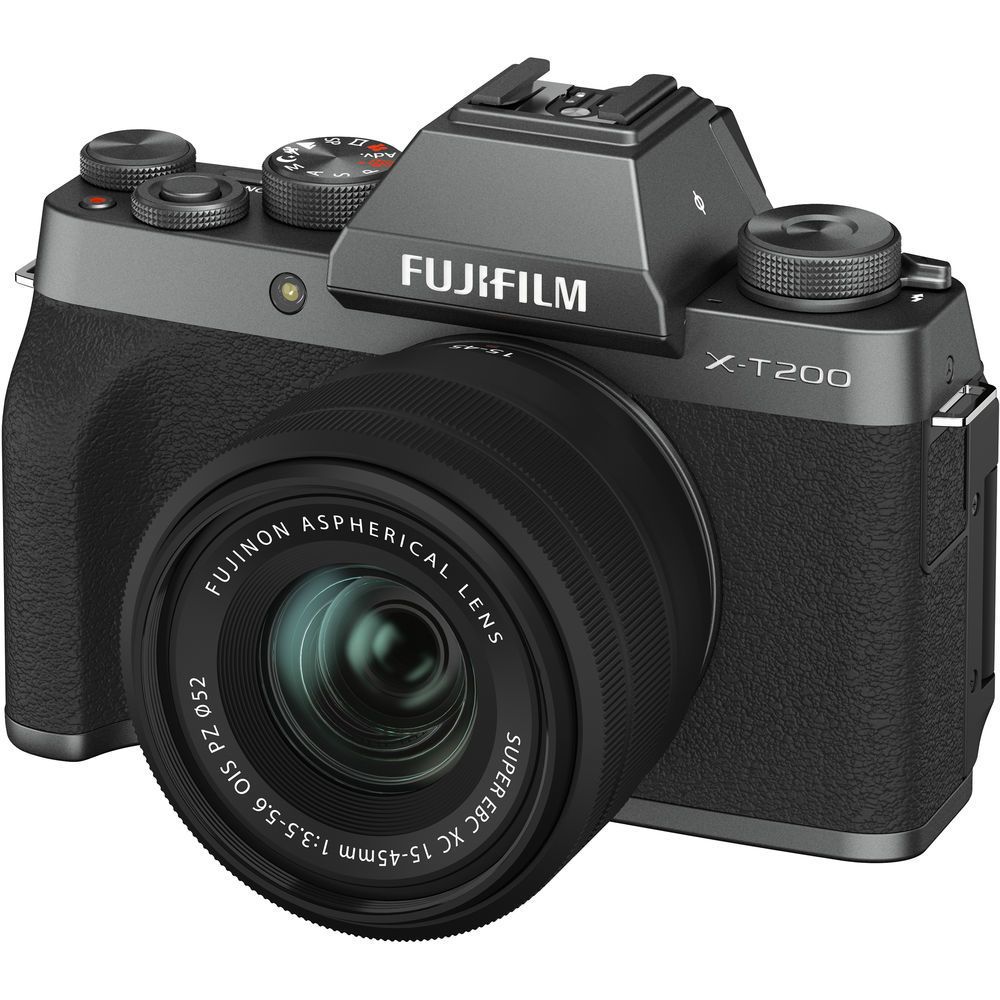
Photograph by Cameraland (Sandton)
Why did I choose to include a mirrorless camera in the first place? Because of the advantages mentioned above. I’m sure that there are beginner photographers who may find the smaller bodies much more attractive than the bigger DSLR bodies.
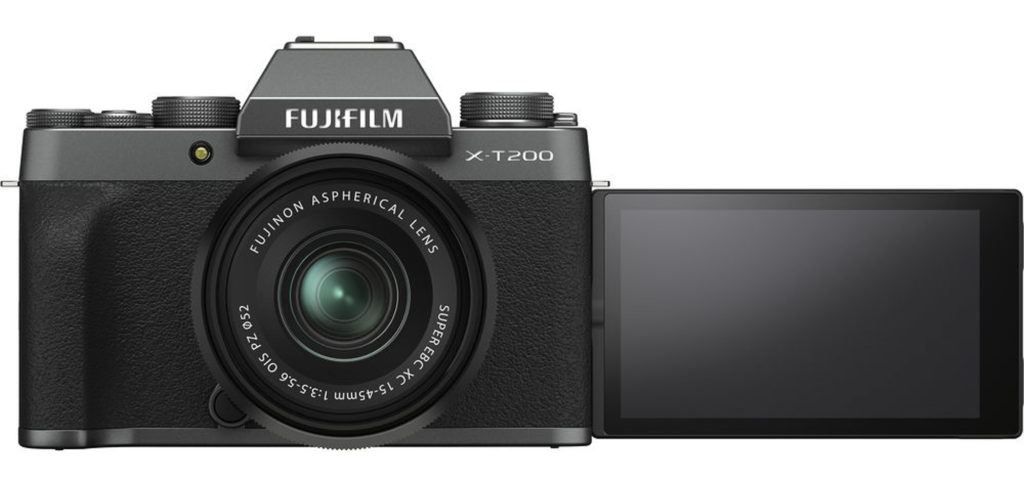
Photograph by Cameraland (Sandton)
So, what are you getting for your +/- $700 US?
- 4K video recording at 30fps
- WI-FI and Bluetooth connectivity
- 5mm audio jack (for video recordings) and audio level controls
- Microphone and headphone inputs
- A 24 Megapixel crop sensor (APS-C), allowing you large-high-quality prints
- Large (3.5”) and bright LCD touch screen
- Eight frames per second continuous (burst) shooting
- Four customizable buttons (two physical and two virtual) and one customizable dial
- Joystick instead of a directional pad (not preferred by all photographers)
- Face and eye detection
- Swivel screen
- Built-in pop-up flash
- Well-designed touch screen interface for ease of use
- Digital Gimbal mode acting as an image stabilizer
- Remote control via smartphone
A Few Cons of the X-T200
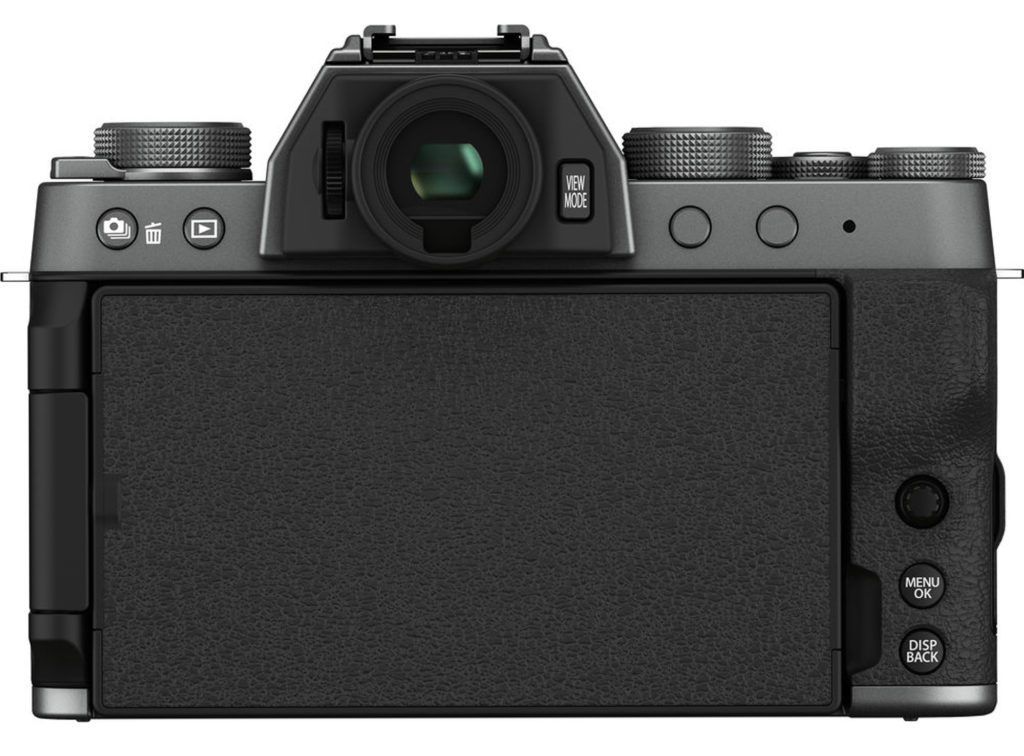
Image 013 – 3 Midrange cameras – Fujifilm X-T200 by Cameraland (Sandton)
- You can’t select a focus point if faces are detected automatically
- The HD video quality is not liked by all and there’s no subject tracking in the video. If you’re not planning on much video recording, then this is obviously not important (I never do videos).
- Not everyone is fond of the joystick placement
- Buffer fills quickly during bursts
Gone are the days when mirrorless cameras were the stepchild of photography.
Why Am I Recommending This Camera in Spite of a Few Let-Downs?
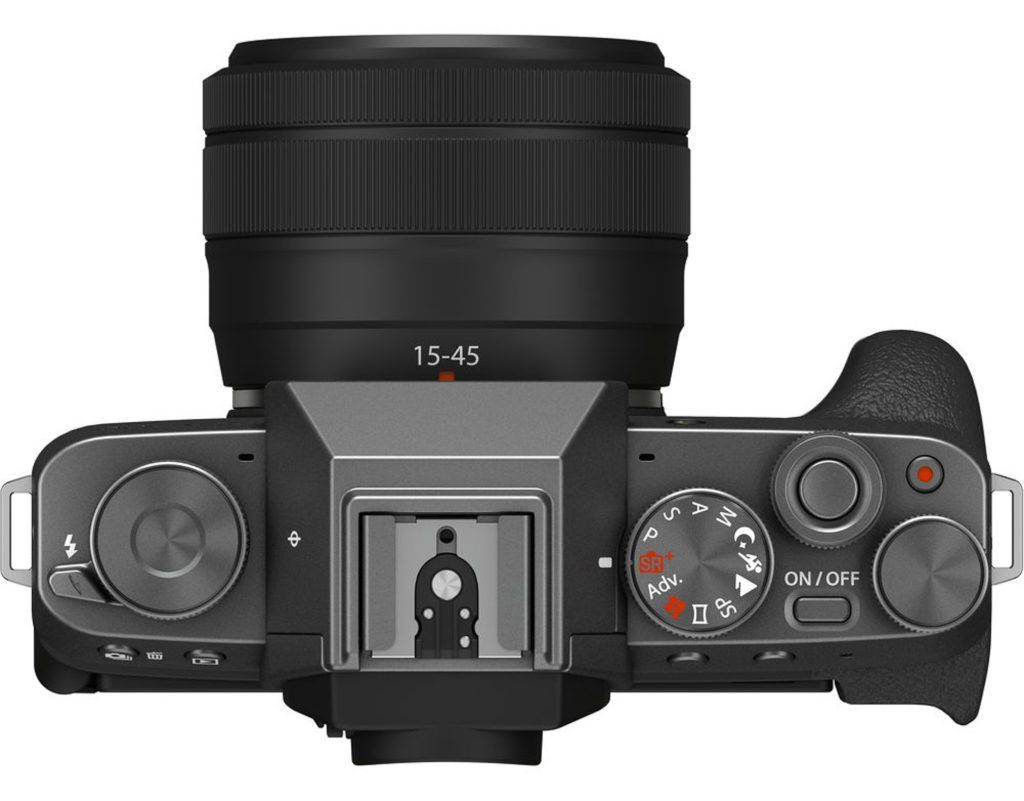
Photograph by Cameraland (Sandton)
- The negatives of this camera will most probably be of very little importance to beginner photographers, who this guide is aimed at.
- Relatively low cost: It still is good value for money and all competitors in this price range will have similar negatives, if not more serious ones.
- Reusable lenses: Fujifilm has a range of lenses known as X-mount The ‘X’ of the X-T200 indicates that it uses lenses from this range. So as long as you upgrade to a body using lenses from the X-mount range (such as the X-A7 or X-T4), you will be able to use your current set of lenses.
- Ease of use of the menu system: The well-designed touch screen interface is one of the strong points of the X-T200.
- It will be loved by beginners used to (and loving) smartphone touch screen operation.
Alternatives in the Same Price Range (Based on Reviews)
- The Canon EOS M50 has:
- a much smaller LCD,
- softer videos,
- worse battery life, and
- fewer lenses to choose from (unless you use an adapter).
- The Olympus OM-D E-M10 III has:
- a smaller sensor (lower image resolution),
- worse subject tracking,
- not such an easy menu system, and
- plenty of scene modes and a great 4K video.
- The Sony a6100 has:
- better autofocus,
- good tracking, and
- worse 4K video quality.
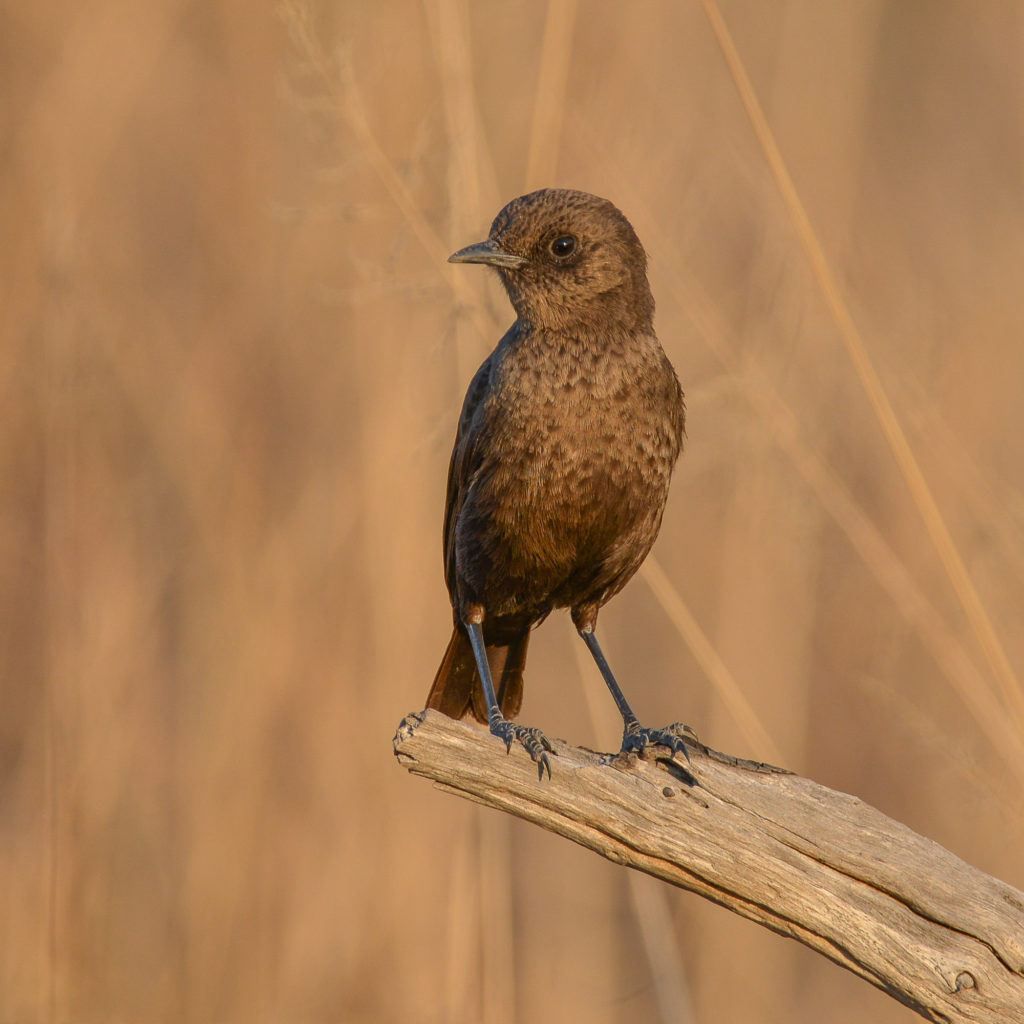
Photograph by Tobie Schalkwyk
Key Lesson: One gets the perception that the mirrorless world has some distance to go before it can really compete with the best of the best from the Nikon and Canon DSLR stalls. They are making huge progress in producing higher-quality images, though.
However, the quality of images is not their only problem. You have to ask yourself if they will ever overcome the lack of outside space on their bodies. How will they accommodate the same range of external buttons and dials as those on DSLR bodies?
Are they going to manage in educating loyal DSLR users to do everything on touch screens? How are they going to prevent touch screen usage from interfering with whatever is on the screen (especially during video recordings)?
Having said that, I know quite a few pro photographers in the weddings and events industries who have made the switch to Fujifilm mirrorless cameras and they swear by it. That implies that if you make the right choice, you will have few or no reasons to regret it.
Recommended Reading: Want a step-by-step guide on photography skills with your DSLR? Grab a copy of our best-selling guide: the DSLR Crash Course.
Conclusion
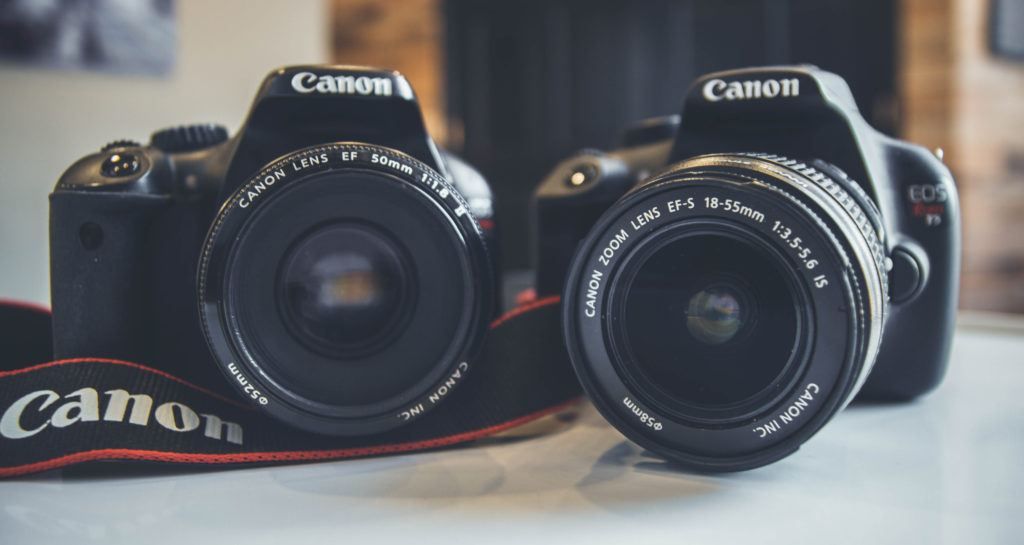
You are spoiled for choice if you have about $700-$1,000 US for spending on a DSLR/mirrorless camera. The secret is probably to go to a camera shop and have a look at a few bodies within your budget. Feel how it sits in your hands. Have a look at its menu system.
Most importantly, take a few shots and look at the image quality. Test its ease of use. Would you be happy carrying it with you all day? Will you feel comfortable with it? If so, then go for it!
Happy snapping!
Self-Check Quiz:
- What is the basic mechanism that DSLRs use to route your scene from your lens to viewfinder?
- How do mirrorless cameras manage to operate without a mirror?
- Name three shortcomings of mirrorless cameras that you hate most.
- What is the main advantage of not having a mirror and who will gain by it most?
- Do you prefer DSLR or mirrorless cameras? Why?
- What are your three most important prerequisites for a mid-range camera?


